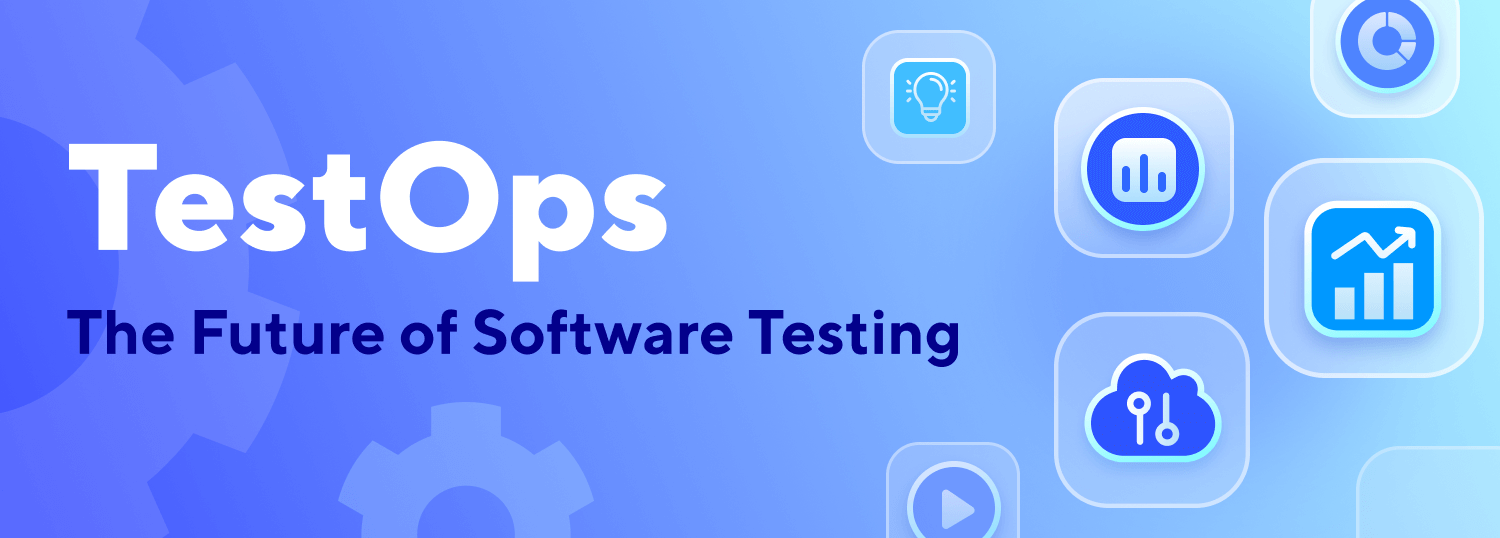
TestOps: The Future of Software Testing

“Software testing is the process of running a program with the intention of finding errors.” — American computer scientist Glenford J. Myers.
Although terms like “quality testing” may seem modern, software testing has been around since the advent of computing roughly 70 years ago. Harvard University scientist Grace Murray coined the terms “bugging” and “debugging” in 1947 when a literal “bug” — in this case, a moth — got stuck in the computer circuitry and interrupted a connection. Since then, software testing has evolved rapidly with the increasing complexity of computer applications, and it continues to evolve. Nowadays there are many different software testing approaches, depending on the functionality of the software and what you want to test it for, but the overall goal of any software test is to provide an objective assessment of the quality of the software and the risk of its failure. As the capabilities and intricacies of computer software have grown, testing has, by necessity, become its own field, to the point where it can and should be operationalized to be done correctly.
This article discusses modern testing operations, or TestOps, and provides a definition of TestOps, reviews the difference between TestOps and DevOps, and explains what to look for in a TestOps solution.
What Is TestOps?
TestOps is the process of using automation to centralize and streamline the planning, monitoring, and testing of your software development. The idea is to turn disjointed, siloed teams and processes into a well-oiled engine that allows you to produce better software, faster, and with fewer bugs.
The four central components of TestOps

- Planning: TestOps planning identifies and prioritizes what will be tested, how (including the test environment), when, and by whom.
- Management: TestOps management helps ensure the testing processes are efficient and scalable via tools that enhance visibility and collaboration.
- Execution: TestOps execution is the actual process of software testing.
- Analysis: TestOps analysis involves reviewing various aspects of the testing operation, including performance, stability, failure diagnostics, and more, to inform improvements in the testing process.
TestOps Features
There are multiple reasons why TestOps is becoming a fundamental approach to ensure a sustainable software delivery ecosystem. Among its advantages are:
- DevOps integration. TestOps exists to ensure that the product development pipeline has all the testing frameworks and tools needed. It is common for QA engineers to rely on the pipelines that IT puts together without much input. TestOps changes this by owning test activities related to DevOps, allowing QA engineers and developers to have full ownership and visibility of the development pipeline so they can tailor it to meet their needs.
- Enhanced test planning. Automation is not effective if the entire codebase has to get tested every time a line of code is changed. TestOps provides a centralized platform that makes it easier for testers and developers to identify what tests to run and when.
- Reduced execution time. TestOps allows developers to leverage the benefits of test automation, it eliminates the complexity of manual testing, and enables developers to make more effective use of their test environments.

TestOps vs. DevOps
The true value and power of TestOps is best illustrated by explaining how it relates to DevOps. While both terms are somewhat similar, each one is very unique and provides enormous value to the software delivery process.
When working with a software development pipeline, DevOps is in charge of ensuring that all the operations needed in the development lifecycle are in place to ensure faster delivery of software. TestOps, on the other hand, ensures that all the processes and operations needed to implement the necessary test approaches are executed to make sure that software gets delivered faster without sacrificing its quality.
In simple terms, TestOps provides the automated testing approach while DevOps ensures that there is a proper environment to execute the tests.
Testing Challenges in the DevOps Environment
To ensure software readiness to support business demands, and meet tight release deadlines, innovative automation testing technologies are being widely adopted to ensure that software does what it is supposed to do. Test automation is widely adopted across the board as a method to save money, eliminate the complexities of manual testing, and a way to release better products faster.
Save money
While test automation’s core value is to provide users with a better testing experience so they can test more often and test everywhere, its implementation can, unfortunately, present a costly challenge due to the lack of skilled professionals needed to build and execute an optimal continuous testing strategy. While it is a highly sought-after trade, there is a clear shortage of engineers who can easily navigate the intricacies of test automation and the tools that provide it.
Eliminate the complexities of Manual Testing
In-sprint test automation is another test “unicorn” that many talk about but few have been able to witness. In-sprint testing is a scenario where developers don’t have to wait until the product is ready; instead, the entire process from test case design to test result reporting is done in one sprint. This approach ensures that the code yielded in every sprint has been properly tested before it is merged with the rest of the codebase.
Release better products faster
Orchestration is one of the most prevalent issues in software development. Every company is a software company, and failures in quality standards affect the business directly. Having visibility into what engineers are building is vital for the business, however, this doesn’t happen often and is quite difficult to achieve, especially in large companies.
Another challenge is the lack of accessibility to test data on demand. This is a necessity to achieve high levels of maturity in continuous testing pipelines.
Read more: Test Orchestration 101
Other challenges
The list goes on and on … other honorable mentions are:
- Inability to meet quality standards
- Overcomplicated testing experiences
- Not understanding the right level of test automation
- Time constraints
- And most importantly, not having the right testing strategy
How Katalon TestOps Can Help
Katalon TestOps is an orchestration platform that connects test automation and DevOps into a shared, actionable feedback loop and provides a command center to orchestrate, plan, execute, and gain immediate insights from test results. Katalon TestOps delivers the following key benefits:
Manage tests efficiently
With TestOps users can manage all their requirements, tests, and integrations in one place. It provides teams with full visibility and provides all the tools and integrations necessary to enhance collaboration among developers, testers, and IT.
Focus on the right tests
Automated testing allows for testing often and everywhere in the pipeline; this requires a proper testing strategy to make the most out of automation. TestOps enables users to map project requirements and milestones to specific test cases so teams can get organized and focus on the right tests.
Increase ROI
TestOps provides a smart and effective planning mechanism that ensures efficient use of resources and enhances environment coverage. It prioritizes tests so users can optimize their test cycle while maintaining high quality.
Streamline test execution
TestOps handles all the execution infrastructure and scalability so you continue gaining value as the test demand grows. TestOps automatically balances test loads across all available test environments in the continuous integration provider to reduce execution time and let teams release better products faster.
Actionable insights
TestOps provides the full picture on quality by leveraging out-of-the-box reports for quality, coverage analysis, release readiness, and more. It allows you to identify and understand the root cause of failures as soon as possible without having to spend countless hours digging through log files. TestOps also provides real-time tracking for fast and accurate debugging.
Seamless integration
As software evolves so do the teams that test it. Different teams will use different tools in their pipeline to achieve their goals. TestOps makes it simple to integrate with existing testing frameworks, CI/CD tools, and test environments so testers can focus on what matters most.
Enable quality at speed
- Makes shift left and right testing adoption feasible for businesses
- Is powered by AI
- Optimizes test execution speed
- Boosts productivity of test investigation
- Provides transparency to quality and coverage
Conclusion
Test automation is the go-to strategy to save money, eliminate the complexities of manual testing, and release better products faster. To maximize the value of automation it is necessary to implement an orchestration platform that allows teams to shift their focus from the complexities of deploying and maintaining testing environments to ensuring that software meets business quality standards.
Take a look at TestOps and try it for free today.






